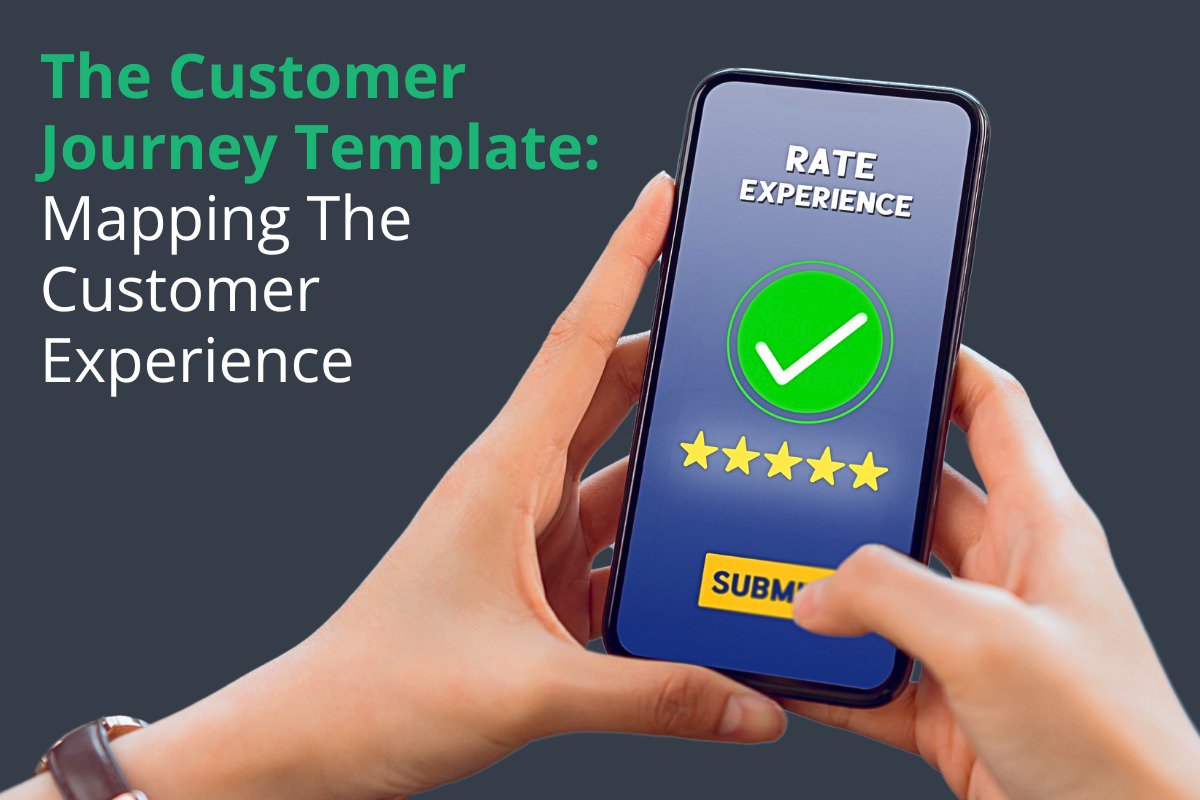Understanding your customers' journey doesn't have to be overwhelming. That's where a customer journey template becomes invaluable. It provides a clear guide to visualize every interaction your customers have with your business. Whether you're looking to improve customer experiences, boost engagement, or discover growth opportunities, this tool helps you make more informed decisions. If you're eager to take meaningful action and drive results, learning how to use a customer journey template is essential.
Key Takeaways:
- A customer journey template helps businesses map interactions across stages like awareness, consideration, decision, service, retention, and advocacy.
- It identifies pain points, tracks emotions, and prioritizes improvements, leading to greater customer empathy and teamwork.
- Popular tools like Google Slides or downloadable templates make mapping easier and more adaptable to either B2B or B2C needs.
- Stages of the customer journey:
- Awareness: Use SEO, ads, and content to attract attention.
- Consideration: Provide comparisons and testimonials to stand out.
- Decision: Simplify purchasing with clear pricing and intuitive design.
- Service: Follow through on promises with onboarding and support.
- Retention: Maintain loyalty with deals and proactive communication.
- Advocacy: Encourage referrals and reward your strongest supporters.
- Common pitfalls to avoid include skipping teamwork, lacking clear goals, and failing to update journey maps regularly.

Using a Customer Journey Template
A customer journey template is an invaluable tool for you to understand and improve your customers’ experience. It provides a structured way for you to map out how your customers interact with your business at different stages. These stages often include awareness, consideration, purchase, and post-purchase activities like customer support and advocacy. By using this template, you can gain deeper insights into each phase, allowing you to make targeted improvements that enhance the overall customer experience.
This tool gives you the customer’s perspective, making it easier to turn insights into clear and actionable steps. It helps you address issues, refine key moments, and improve overall satisfaction. For example, if you notice that customers frequently abandon their carts at checkout, the journey map can show you why. Perhaps the process is confusing, or technical support is hard to access. With these insights, you can quickly solve the problem.
Additionally, customer journey templates help foster a sense of empathy across your teams. When everyone—from marketing to product development—can see where customers struggle, collaboration becomes more effective. For instance, marketing can streamline messaging, while the product team can focus on addressing usability challenges.
If aligning processes to prioritize critical touchpoints is your objective, a customer touchpoint analysis may be worth exploring. This approach focuses on understanding every moment your customer interacts with your brand, helping to add value while reducing difficulties.
Whether your company specializes in B2B solutions or B2C products, templates align departments toward common goals and encourage customer-first approaches. This should result in stronger strategies and a better experience for your customers.
Learn more about strategizing and aligning touchpoints to drive real business impact.
Create a Customer Journey Map with Ease
Creating a customer journey map doesn’t have to be overwhelming. By breaking the process into manageable steps, you can make it much simpler. Start by hosting a brainstorming session with your team, as every department interacts with customers in different ways. Marketing might highlight email campaigns, while sales may focus on calls or meetings. Collaboration across departments ensures your customer journey template represents the entire customer experience.
Use platforms like Google Slides to design and share your map. These tools make it easy to collaborate and adjust your map without disrupting your workflow. As you build your map, focus on one customer persona and scenario at a time to keep things targeted and relevant. For example, start with your most common buyer persona and map out their journey instead of trying to address all audience types at once. This will help you clarify your goals and avoid unnecessary complexity.
Finally, leverage digital tools, such as Google Chrome extensions, to simplify research and track critical moments in the customer journey. These tools can highlight where customers struggle, like a drop-off in the purchasing funnel, allowing you to create more effective solutions.
For actionable tips, explore how to optimize campaigns for leads to connect your journey map with marketing and conversion efforts. By following these steps, your maps will become valuable assets for improving customer experiences.
The Stages of a Customer Journey Template
Breaking down the stages of a customer journey helps you understand how customers interact with your business and reveals areas for improvement. By identifying each stage, you can make more informed decisions to optimize the customer experience. Here are the key stages and why they matter:
Awareness: The First Interaction
In this stage, potential customers realize their problem and begin seeking solutions. If your business isn’t visible, you could lose valuable opportunities. Therefore, focus on SEO and provide educational content to ensure you're part of their discovery process.
Consideration: Exploring the Options
At this point, customers compare solutions, looking at features, pricing, and reviews. To stand out, offer clarity and build trust. For example, use testimonials, product demos, and comparisons to highlight your value and simplify their decision.
Decision: Stepping Into Action
At this point, customers are ready to commit. A smooth checkout process, transparent pricing, and clear calls to action are crucial. Even small obstacles can cause abandonment, so ensure the process is seamless.
Service: Following Through
Once a purchase is made, meeting expectations is essential. Onboarding, prompt communication, and accessible support reinforce trust and loyalty. Failing to deliver on expectations can damage customer relationships.
Retention: Focus on Loyalty
Create recurring value for your customers to keep them loyal. Engage with newsletters, exclusive offers, and personalized touches. Retaining customers is often more cost-effective than acquiring new ones.
Advocacy: Turning Customers into Promoters
Satisfied customers naturally evolve into advocates, promoting your brand through word of mouth or referrals. Moreover, advocacy plays a crucial role in driving a steady stream of new customers, thanks to the power of authentic endorsements.
Customer Journey Templates Add Value to Your Business
An editable customer journey template is a time-saving solution that simplifies the mapping process for you. Instead of starting with a blank slate, these customer journey templates offer a well-structured foundation, allowing you to focus on what truly matters—enhancing customer satisfaction.
What’s more, these templates are customizable to fit your unique business needs. You can adjust stages, touchpoints, and even the visual format to suit various industries, whether you’re in retail, tech, or services. For instance, you could track the emotions customers experience—like frustration or excitement—at specific touchpoints. This insight will help you pinpoint areas for improvement and ultimately enhance the customer experience.
By integrating such tools into your process, your team can spend less time on structure and more time on refining actionable insights that improve touchpoints and outcomes.
Journey Maps Can Drive B2B and B2C Business Success
Customer journey maps provide clarity on how customers experience your products or services, whether you're working with corporate clients (B2B) or individuals (B2C). These maps, in turn, guide you in improving satisfaction and driving results.
For B2B businesses, decision-making often involves multiple stakeholders. By mapping each interaction—such as emails, demos, and contracts—you can identify delays or blockers, which allows you to streamline communication and simplify the buying process. For example, if a software company notices inefficiencies during the demo phase, improving onboarding can convert indecisive prospects into clients.
On the other hand, omnichannel optimization enhances customer engagement by ensuring a seamless experience across platforms. B2C businesses, for instance, benefit from allowing customers to pick up online shopping in-store, while B2B teams can ensure consistent communication from initial inquiry to closing the deal. Customer journey templates help identify friction points and strengthen transitions across platforms effectively.
Moreover, customer journey templates are highly customizable. B2B maps can focus on procurement cycles, while B2C maps highlight emotional motivators during purchasing. By tailoring templates to your audience, you gain clarity and actionable insights.
Mistakes to Avoid in Customer Journey Mapping
Failing to involve multiple teams in the mapping process can create blind spots. Different departments bring unique insights into how customers interact with your business, making collaboration essential. For example, while your sales team focuses on personal meetings, your support team is more familiar with where customers experience frustration.
Additionally, not defining specific goals for your customer journey template can hinder progress. A general map isn't useful unless it ties back to actionable objectives, such as reducing churn or streamlining processes.
Finally, outdated maps can derail progress. To stay relevant, your maps must align with current customer behaviors and consistently address known issues.
Customer journey maps simplify the complexities of customer interactions. Using templates, tools, and collaborative strategies, you can refine touchpoints, enhance satisfaction, and bolster engagement. Start mapping today to optimize what matters most—your customers’ experience.
Transform Your Customer Experience Today!
Ready to map out an exceptional customer experience? The customer journey template is your key to enhancing the customer experience. Uncover insights, identify opportunities, and create strategies that drive engagement and satisfaction. Contact iProv today to get started on creating a customer journey map that drives engagement, satisfaction, and growth!


Leave a Reply